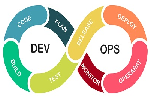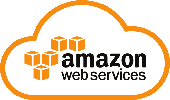DevOps Roadmap

Factors and decided to implement DevOps in your company, you need a step-by-step plan to transition from traditional software development to the DevOps process. Here, we outline the key steps.
1. Organizing a DevOps initiative
The CIO IT department of a company runs the DevOps initiative as part of the program. Therefore, the IT department has the opportunity to make changes in development and operational activities. The CIO, for its part, is able to arrange financial investment and human resources in the most favorable manner. The Program Manager is responsible for creating the DevOps strategy and overseeing its implementation.
2. Building the DevOps strategy
To create an effective DevOps strategy, the program manager must use best practices to improve inter-departmental collaboration and launch new avenues of infrastructure development, software development and testing. Important methods include:
Put the development company's development, testing, design, operations and other teams in a collaborative DevOps environment, focusing on the outcomes of the software development cycle and understanding each other's intentions and functions. For everyone involved in software development and operations - set a common goal to accelerate the software development cycle and ensure the high quality of the software.
Implement IaC to ensure quick access to IT infrastructure at the request of developers or test engineers, when they need to create a new architecture or check its quality. This enables DevOps practitioners to acquire new infrastructure for development or testing with one click, and to avoid frequent human errors caused by the manual configuration of the IT infrastructure.
Automate software building, unit testing, application testing via UI, software integrating, deploying, and releasing processes to speed up the software development-testing-releasing cycle.
3. Containerizing
Containerization implemented with such tool as Docker solves the problem with the reliability of software, for example, when it travels from the development to the testing environment and then to production. Containers include everything required to run an application, i.e. all the dependencies, libraries, configuration files. The isolation of the containerized parts of the software from the overall IT infrastructure allows for their stable running regardless of the differences in the environments they are put in. Moreover, since the pieces of application (its database, front end, etc.) are put into several containers, it is easier for an operations team to manage the application, since they have no need to rebuild the entire software when the changes are required in one of its micro services.
4. Integrating infrastructure automation with CI/CD tools
When software is put into containers, the containerized application needs to be managed properly. Such infrastructure automation tools as Kubernetes, Ansible, Chef, or Puppet are integrated with CI/CD tools like Jenkins, Bamboo, or GoCD for more efficient configuration management and software deployment. For example, Kubernetes – for large infrastructures – or Ansible – for smaller ones – allows managing containers for fault tolerance, monitoring their health and rolling software updates, and Jenkins is used to create, test and deploy new builds into Kubernetes.
5. Increasing the amount of test automation and aligning QA with development
To achieve faster delivery with DevOps, sufficient automated testing must be ensured. However, not each testing type must be automated. For instance, exploratory, usability, and security testing should still be performed manually. Depending on the efforts needed to write automated tests, functional testing may partially remain manual. The development and testing activities are carried out in tandem to avoid post-release bugs. While the application is still in development, the best practice is to conduct automated tests 1-2 times a day. In case defects are found, developers work on stabilizing software before releasing the next build.
6. Ensuring total application performance monitoring
Application performance monitoring provides the DevOps-related teams with transparency over all the performance issues, e.g., slow response, memory leaks, runtime errors. The issues may be revealed during application server monitoring, user experience monitoring, etc. Application performance monitoring allows detecting, prioritizing and isolating application defects before end users find them, as well as finding the root causes of the errors quickly with the use of special application monitoring software, such as Zabbix, Nagios, or Prometheus customized for monitoring a particular application.
Summing up: To switch or not to switch
Before you decide to implement DevOps, we suggest considering all the time, organizational efforts, as well as new technologies you’ll need for the DevOps initiative to be successful. The most tangible benefit DevOps will bring is delivering software more rapidly without compromising on quality. To achieve this benefit, you’ll need to transform both software development process and IT infrastructure arrangement. DevOps helps to make your IT infrastructure reliable – due to the strong collaboration between the DevOps-related teams
The DevOps seminar will help you to learn DevOps from scracth to deep knowledge of various DevOps tools such as fallowing List.
Kubernetes.Learn Latest Technologies

DevOps

AWS

Python

Azure

G Cloud

Linux

Web Tech

Data Bases

Testing

Git

Ansible

Chef

Kubernetes

HTML

CSS

